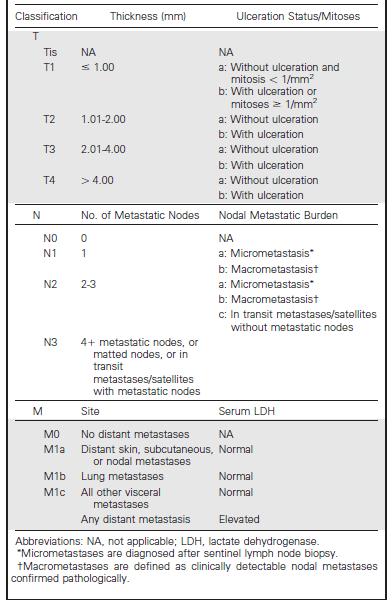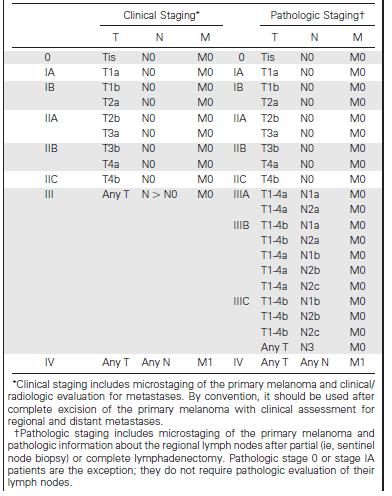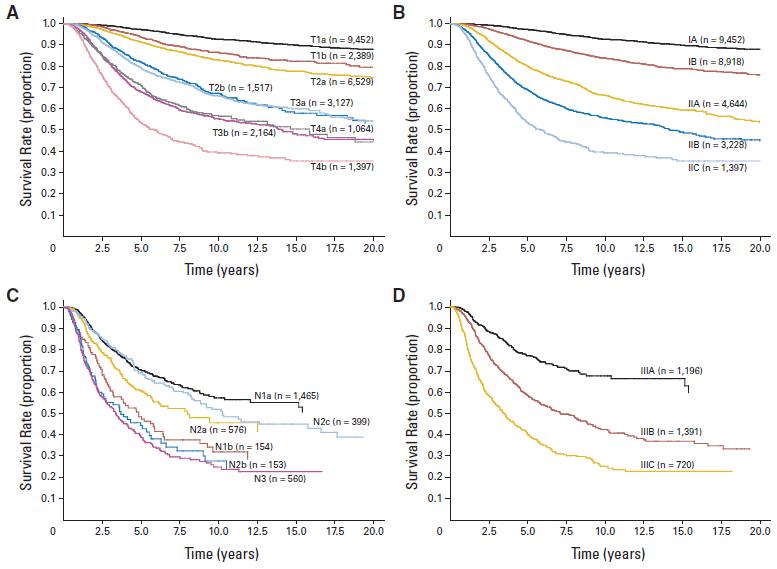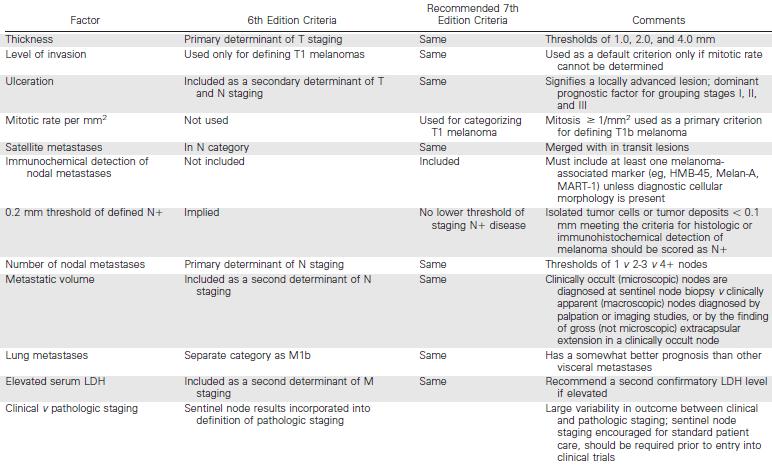TNM staging
The American Joint Committee on Cancer (AJCC) TNM classification is the most widely accepted staging system for cutaneous melanoma [1, 2].
It is based on the combination of three factors: 1) tumor depth (T), as described by Breslow's thickness (expressed in millimeters), 2) lymph node status (N), including in-transit metastasis, and 3) distant metastasis (M), including plasma levels of lactate dehydrogenase (LDH). Their combination defines four stages and nine substages (Figure 1).
The TNM staging system has been recently updated according to the survival data obtained from over 17,000 patients [1, 2].
The TNM staging system (Figure 1) identifies four stages (Figure 2) and nine substages (Table 1) associated with different clinical outcomes [1, 2].
Stage I is characterized by very high overall survival (OS) rates (5-year OS ≥90%), which underscores the importance of early diagnosis (see Prevention section).
Stage II is associated with a very variable outcome, the 5-year OS ranging from 45% (stage IIC) to 78% (stage IIA). The prognostic value of ulceration is of particular relevance in this stage: the presence of this adverse prognostic factor shifts patients with the same tumor thickness from stage IB to IIA (T2), from IIA to IIB (T3), and from IIB to IIC (T4). The impact on survival is evident: for instance, T4 melanoma (thickness >4 mm) is associated with a 67% 5-year OS rate when ulceration is absent (T4a, stage IIB), the survival rate drops to 45% when ulceration is present (T4b, stage IIC).
Given the wide range of survival rates observed in stage II patients, it is not surprising that stage III survival rates are in part overlapping (5-year OS rates range from 24% to 69%). With stage III disease, only 49% of all patients with nodal metastases survive 5 years (37% at 10 years), but the range of melanoma-specific survival is large, ranging from 13% at 5 years for patients with the combination of the worst risk factors (ulceration of the primary tumor, high regional lymph node burden) to 69% at 5 years for the most favorable combination of prognostic factors.
Stage IV is characterized by a dismal prognosis, although some variability is found according to the site of metastasis and the LDH plasma levels (5-year OS rates range from 9% to 18%).
Of note, there is a significant variability in overall survival rates within each single TNM stage and substage (see Table 1).
Although the TNM classification is the best prognostic tool currently available, the above considerations highlight the limited ability of this staging system to accurately predict the clinical outcome on a single patient basis.
- [1] Balch CM et al, Prognostic factors analysis of 17,600 melanoma patients: validation of the American Joint Committee on Cancer melanoma staging system. J Clin Oncol 2001, 19: 3622-34
- [2] Balch CM et al, An evidence-based staging system for cutaneous melanoma. CA Cancer J Clin 2004, 54(3): 131-49





